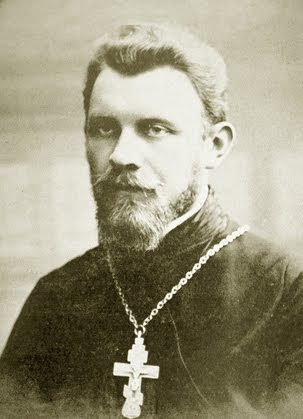Saturday after Passion Sunday.Station at St. John before the Latin Gate.(S. Giovanni a Porta Latina.) Interior of the Church of St. John before the Latin Gate.
Interior of the Church of St. John before the Latin Gate.In the early Middle Ages,
this Saturday preceding Holy Week
in which the great ceremonies began was aliturgical:
sabbatum vacat.This was in order that the people might be able to take some rest,
whilst the Pope, too, in the Vatican or the Lateran,
having distributed the paschal alms to the poor,
consigned the consecrated Host to the Titular priests.
This latter rite
signified their close connection with the Apostolic See;
and during the following week
they could begin their Mass at whatever time they preferred,
without having to wait every day
for the acolyte to bring the particle consecrated by the Pope
for them to place in their chalice.
It was sufficient that after the ritual breaking of the Host,
they should place in the chalice
a particle of that Host sent to them on this Saturday by the Pope.
To this ceremony, with its profound significance,
was joined the distrbbution of abundant alms
-in imitation of the Saviour who, on the occasion of the Pasch,
was wont to entrust Judas with the duty of giving alms to the poor.
In the course of time, both these ceremonies became obsolete,
and in their place a new station was instituted
at the Church of St. John before the Latin Gate,
which was first connected by Ado in his Martyrology
with the martyrdom suffered at Rome by the Apostle under Diocletian.
 St. John being lowered into the oil.
St. John being lowered into the oil.The tradition which relates
that St. John was miraculously preserved from death
when plunged into a caldron of boiling oil is very ancient,
and is vouched for by Tertullian;
but that this scene took place before the Latin Gate
precisely on the spot where the Church of St. John now stands,
is a conjecture of Ado.
 Oratory commemorating the location of the martyrdom.
Oratory commemorating the location of the martyrdom.However this may be,
the important fact is the coming of the Apostle John to Rome
some ten years after the martyrdom of Sts. Peter and Paul.
This stational Church of St. John before the Latin Gate i
s the most ancient and venerable monument
which records for the faithful the apostolate at Rome
of the disciple whom Jesus loved so well.
 Poissy Antiphonary 1335 - 1345Liturgical Note:
Poissy Antiphonary 1335 - 1345Liturgical Note:The Mass has no proper except for the collects and the Lessons,
for in the early Middle Ages
so great was the respect for the Antiphonary of St. Gregory,
that no one whould have dared to insert in it any new musical compositions.
Hence the chants for today's Mass are all borrowed from that of yesterday.
For so it was and thus must be so.
Oremus.Let us pray.O Lord we beseech Thee that Thy people,
since thet are hallowed as Thine Own,
may grow ever in godly love towards Thee
their Father Who art in heaven,
and may be so schooled in holy works,
that being more and more pleasing in the sight
of Thy Divine Majesty,
they may ever receive more and more of Thy gifts.
Through our Lord Jesus Christ.
Martyrology.The morrow is the
Lord's
Day of the
Palms,
on the which day our Lord
Jesus
Christ entered
Jerusalem
sitting upon the foal of an ass,
as had been foretold in the prophecy of
Zacharias,
and the multitude came forth to meet
Him
carrying branches of palm-trees.


























































































































